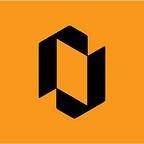Revolutionizing On-chain Data Storage on Bitcoin: Recursive Inscriptions
In an exciting development earlier this year, Casey Rodarmor introduced a unique concept known as ‘Ordinals.’ It involves inscribing data onto individual satoshis, much like Non-Fungible Tokens (NFTs), but with an added twist: these inscriptions acquire rarity traits and become collectibles.
Interestingly, despite the birth of NFTs on Bitcoin, modern collectors often sidestep Bitcoin in favor of Ethereum or other purpose-built NFT blockchains. However, this scenario is rapidly changing with the advent of profile picture (PFP) inscriptions.
Bitcoin is reclaiming its ground, ranking 2nd in 30-day trading volume, primarily due to the rise in popularity of PFP inscriptions. What’s more, it is speculated that these inscriptions could potentially propel Bitcoin to usurp Ethereum’s years-long NFT dominance. But a new contender is emerging that could fuel Bitcoin’s momentum even further: on-chain software utilizing Ordinals.
The Power of On-chain Bitcoin Software Using Inscriptions
Bitcoin inscriptions can store up to 4MB of data on its blockchain — a groundbreaking level of distributed storage on the world’s oldest and most decentralized network. The concept of ‘recursive inscriptions’ has evolved from this premise.
In essence, a recursive inscription is akin to a chain, where each link can call and use data from the previous links. This capability allows the creation of robust, on-chain software that could run video games, movies, or even complex software with gigabytes of data.
Recursive inscriptions not only enhance storage efficiency but also pave the way for new types of software. Permissionless contracts enforced by Bitcoin’s formidable hashrate and permanent storage could potentially be developed without the need for new cryptography. However, like any new technology, recursive inscriptions come with limitations and concerns. Chief among them is their dependence on Casey Rodarmor’s Ordinals theory, which isn’t a part of Bitcoin Core or network consensus.
Unleashing the Potential of Recursive Inscriptions
The Ordinals community is buzzing with excitement as over 12 million inscriptions have been created in just a few months, revitalizing innovation within Bitcoin. The advent of ‘Recursive Inscriptions’ has stirred considerable interest, as it enables one inscription to link to another, heralding a new era of composability on Bitcoin.
This system, which allows links to other inscriptions using a specific format (/content/<INSCRIPTION_ID>), has made inscriptions more potent and resourceful. For instance, imagine the possibility of inscribing popular Javascript and CSS libraries for anyone to use. This could enable the creation of rich HTML files directly on Bitcoin, which could even interlink with each other.
An innovative example of this process is the creation of collections using recursion, which allows the maintenance of high-quality images at a fraction of the original file size. Javascript and the HTML <canvas> element can draw on the linked traits to output an image replica, marking a notable advancement in on-chain data management.
A Look into the Future: The Evolution of Inscriptions
The possibilities opened up by recursive inscriptions have created a renewed sense of dynamism within the Bitcoin community. While concerns about the technology’s limitations persist, the prospect of integrating vast amounts of data within Bitcoin’s blockchain without compromising image quality has sparked significant interest.
The power of recursive inscriptions to foster new types of software and the advent of more sophisticated on-chain systems promise an exciting future. As developers continue to explore the potential of this innovative approach, we can anticipate an era of digital creativity and ingenuity driven by the evolution of inscriptions.
The rise of recursive inscriptions has shown that the capacity for change and growth within the Bitcoin ecosystem is vast. In a world where technology continues to progress at a rapid pace, it is exciting to see Bitcoin at the forefront of these developments, proving that it’s more than just a digital currency — it’s a platform for continuous innovation.
Created with Chat 4 AI-assistance (For formatting and structure)
